
Building Management

Redefining the spatial experience with WPT
Environmental Sensors with Low Maintenance Costs
Installing environmental sensors can improve resident satisfaction by realizing comfortable temperature and humidity control, but it raises another issue of complicated management and high maintenance costs as they require periodical battery replacement.
Environmental sensors using "WPT" (wireless power transfer) are an innovative solution that does not require battery replacement and greatly reduces maintenance costs.
Withiout wires, environmental sensors can acquire much more accurate environmental data since the sensors can be installed closer to occupants. Additionally, changing the layout of sensors or devices becomes much easier if free from wires.



Realize WPT for the entire space by placing power transmitters at 6m intervals.
Necessary and Sufficient Number of Sensor Placement
Power supply for more than 100 units

One transmitter can supply power to more than 100 receivers at the same time, allowing for flexible operation when adding sensors or performing maintenance.
Multi-Function Wireless Sensor
Multi-sensor

Environmental sensor integrates multiple functions, sensing temperature, humidity, illumination, CO2, (air pressure, UV, noise) and converts them into digital data.
Connected to a variety of BMS
Data collection and linkage
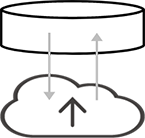
Data communication is performed wirelessly at the same time as power supply. Data can be periodically acquired from environmental sensors, and the system can be linked to and operated with various building systems including BEMS.
Features of WPT Environmental Sensing
SDGs Cost Reduction

- Air conditioning and lighting can be automatically managed from sensors placed at each seat.
- Expected to reduce electricity costs by up to 30% compared to conventional systems.
- No wiring or battery replacement required, reducing excess waste.
Improved Comfort
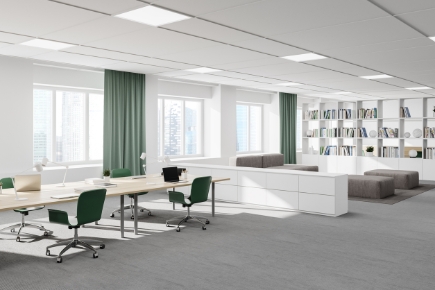
- Eliminates temperature discomfort caused by individual differences.
- Operation of "airflow" and "airflow protection" can be changed by detecting the presence or absence of people.
- Lighting can also be adjusted according to the location of the person on the office floor.
- Effective as infectious disease countermeasures by touchless control.
Redefine the Office Space

- Optimal solutions for optimal office building environments can be studied by visualizing human flow and dead space through the acquisition of environmental and human sensory data.
- Flexibly removable and re-installable environmental sensors allow for flexible changes in office layout.
Product Overview
Power Receiver / Sensor
Environmental sensor that does not require battery replacement and operates with received power
- Power receiving capacity that meets the power requirements of sensor modules
- Data communication based on the required specifications
- Achieve thinness required for practical use
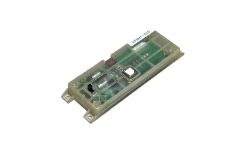
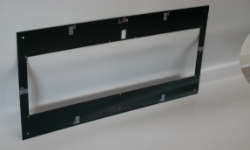
Because of its thinness, it can be installed anywhere, such as on the back of a desk or chair.
| Receivable power | : | about 1mW |
|---|---|---|
| Operating power | : | 0.3mW or less |
| Size | : | Adjustable to the application |
Power Transmitter
Capable of both transmitting power and receiving data
- Integrated design of power CW emission (920MHz band) and sensing data communication (2.4GHz band).
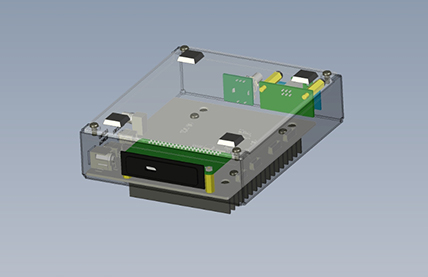
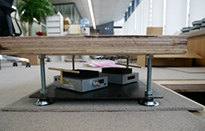
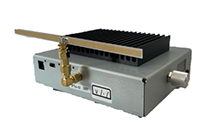
Install the transmitter in a high place near the ceiling or under the floor so that they are parallel to the ground. The transmitters can realize the wireless power supply via WPT for the entire space by placing them at intervals of 6 meters.
| Antenna | : | Patch antenna |
|---|---|---|
| Power source | : | AC power available |
| Frequency band | : | 920MHz band (918MHz and/or 919.2MHz) |
| Output power | : | 1W |
| Transmission interval | : | 4 seconds transmission, 50msec or more stoppage |
| Data reception | : | Bluetooth LE (2.4GHz) |
WPT station application to be approved
The essence of construction DX is
a "business model transformation from hardware to software."
Hardware

- Buildings
- Facilities
Software

- Software
- Data
- consulting
Creating new services using spatial data
The shift of business model from hardware to software is not limited to the field of planning/proposals and consulting. The area that has the highest potential yet still untapped is creation of new software services.
The key word is "spatial data"
Spatial data can be categorized into (1) human data, (2) facility data, (3) environmental data, and (4) architectural data. Aeterlink has WPT technology that can realize sensing which is essential for spatial data acquisition without wires and batteries. It becomes possible to visualize all kinds of spatial information by being free from physical constraints.

What kind of service would be created if we could visualize the data of all the components of space such as people, things, facilities, and environment?
What we are working on as a first step with general contractors and developers is to create an office space that is environmentally friendly and personalized for each tenant. We are aiming to create an office space that is far more comfortable and productive than a home or third place by controlling air conditioning and lighting automatically based on environmental data such as temperature, humidity, illuminance, and CO2 sensors.
In addition to personalization of air conditioning and lighting, we would like to utilize a variety of spatial data in the future. In office buildings, we can visualize the level of concentration and physical condition of tenants based on their vital data, and derive insights for improving office work efficiency. In logistics warehouses, we can visualize inventory location information from location information tags attached to stored items. In commercial facilities such as hotels and stores, we will be able to suggest the optimal sales route by visualizing the flow of customers.
The prerequisite for these services is to establish continuous relationship with the occupants or owners of the facility.

Redefining the spatial experience by WPT
We believe that the scope of application of data sensing, unleashed from physical constraints by WPT technology, is infinite.
At Aeterlink, we are looking forward to working with you not only in replacing conventional power supply technology but also in planning a new construction and its operation so that constructors can demonstrate new presence after completion.

WPT System Implementation Case Study

Takenaka Corporation to implement WPT system into Shizuoka Office
Takenaka Corporation has begun the world's first implementation of microwave WPT (wireless power transfer) into its Shizuoka Office, utilizing long-distance WPT technology (AirPlug™︎).
The air conditioning system using WPT is aimed at air conditioning management and energy saving in accordance with actual usage.
Voice of Customer

Mr. Yasutomo Matsuoka
Takenaka Corporation
About the Demonstration Experiment
Aeterlink offers paid PoC (Proof of Concept) of WPT solution in your office space. We will work with you to examine the feasibility of redefining the office space such as evaluating power supply efficiency and linking data with building management systems.
(Reference) Demonstration Experiment with Takenaka Corporation
Aeterlink, a startup that develops long distance WPT technology, announces the result of a demonstration experiment in 15-meter WPT with Takenaka Corporation - next-generation building envisioned as an office space (sensor mesh task ambient air conditioning)
(Please contact us via the inquiry form for the details.)
Contact Us
Standards and Safety

Domestic Radio Law
Aeterlink complies with RRPG (Radio Radiation Protection Guidelines) that was established considering the effects on the human body based on Radio Law set by the Ministry of Internal Affairs and Communications.
RRPG (Radio Radiation Protection Guidelines)
Aeterlink complies with international guidelines set by ICNIRP (International Commission on Non-Ionizing Radiation Protection).
These are equivalent to the standards set by RRPG of Japan.
ICNIRP (International Commission on Non-Ionizing Radiation Protection)
International guidelines have been formulated by evaluating all scientific literature that has been evaluated by experts, including reports on cancer and non-thermal effects, and are widely used internationally, including in Europe.
The World Health Organization (WHO) has also taken the position that international guidelines should be adopted.